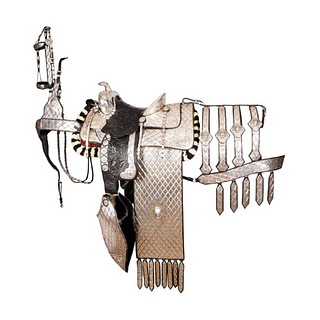The Most Expensive Paintings That Continue to Intrigue the Art World
- Leonardo da Vinci
- Salvator Mundi
- Pablo Picasso
- Rembrandt Van Rijn
- Paul Cézanne
- The Card Players
- Amedeo Modigliani
- Nu couché
- Vincent van Gogh
“I found I could say things with color and shapes that I couldn’t say any other way–things I had no words for.” – Georgia O’Keeffe
Since time immemorial, people have found unique ways of expressing themselves through art. Prehistoric paintings illustrate the inherent connection between human beings and their roots in nature. Paintings also served utilitarian needs in folk culture before a patron system emerged in the medieval age. It was only when "art for art's sake" became the new form and style of expression in the West that the economics of art began to change.
The 19th century witnessed the emergence of commercial art galleries. Subsequently, during the 1900s, the rich bought paintings and objet d’art that recreated the lost charms of the past. International art dealers played a key role in the economics of art during this period. Joseph Duveen, known as the most influential figure of his time, was one of them. He often persuaded American millionaires into buying paintings that were reminiscent of Britain’s privileged class. Duveen paid record-breaking wholesale prices for Thomas Lawrence’s Pinkie and George Romney’s The Misses Beckford before he resold them.
However, the most famous expensive paintings of the world remain priceless. The works of Old Masters and modern trailblazers mostly reside in public museums. According to the Guinness World Records, Leondardo da Vinci’s world-renowned Mona Lisa has the highest ever insurance value for a piece of art. Housed at the Louvre in Paris, its value was assessed at USD 100 million in 1962 or approximately $860 million in 2020 after inflation.
Over the ages, various other artworks have appeared on the list of the world’s most expensive paintings. Which pieces hold this honor, and what makes them special? Find out below.

Leonardo da Vinci's 'Salvator Mundi' (Christie's)
Salvator Mundi by Leonardo da Vinci – The lost-and-found masterpiece
King Louis XII of France and his wife, Anne of Brittany, possibly commissioned Leonardo da Vinci’s Salvator Mundi after the conquests of Genoa and Milan. Among its many mysteries, the Salvator Mundi evidently disappeared from 1763 until the beginning of the 20th century.
Sir Charles Robinson bought the piece in the early 1900s. Experts of the time attributed the work to Bernardino Luini, Leonardo’s follower. In 1958, the painting appeared at Sotheby's in England and sold for GBP 45 (about USD 125). It vanished again. Decades later, it reappeared at a small American auction house. The Salvator Mundi later sold at Christie's New York in November 2017 for USD 450.3 million. It set a new record price for a painting.
The evocative oil-on-panel painting is a half-length image of Christ. Dressed in Renaissance-era garb, he is depicted as the Savior of the World. Christ gazes steadily at the viewer. He holds a translucent crystal sphere in his left hand and crosses his right fingers in a benediction.

Pablo Picasso, Les femmes d'Alger (Version "O") (1955), courtesy Christie's Images LTD. 2015, © 2015 Estate of Pablo Picasso / Artists Rights Society (ARS), New York
Les Femmes d'Alger (Version O) by Pablo Picasso – A tribute to Eugène Delacroix
Pablo Picasso’s paintings famously smash records at auction and Les Femmes d'Alger (Version O) is no exception. Les Femmes d'Alger (Women of Algiers) is a series of 15 paintings and drawings created between 1954 and 1955. The series was a tribute to Eugène Delacroix, who Picasso deeply admired. Victor and Sally Ganz from Paris bought the entire series for $212,500 in June of 1956.
Version O (1955) is the concluding painting in the series. It sold for $31.9 million in 1997 at Christie's New York. Libby Howie, a British art dealer, bought it for an anonymous Saudi Arabian collector. In May 2015, Christie’s again auctioned Version O. Hamad bin Jassim bin Jaber Al Thani, the former Qatari prime minister, purchased the piece for a whopping $179.4 million.
With a riot of colors, this painting makes a strong reference to Cubism. The pathbreaking, flattened perspectives created an innovative style that was characteristic of Picasso’s oeuvre.

Rembrandt Van Rijn (1606-1669), Portrait of Maerten Soolmans, 1634. Overall canvas size: 209.5 x 135.5 cm. Sight size: 207.5 x 132 cm. / Rembrandt Van Rijn (1606-1669), Portrait of Oopjen Coppit, 1634. Overall canvas size: 210 x 134.5 cm. Sight size: 207.5 x 132 cm.
Pendant portraits by Rembrandt – The only full-size portraits by the artist
Rembrandt’s pendant portraits of Maerten Soolmans and Oopjen Coppit also make the list of the most expensive paintings of the world. They are a pair of full-length wedding portraits commissioned by a young couple for their wedding in 1634. The Rothschild family initially owned the paintings. In 2015, the Louvre and the Rijksmuseum jointly purchased the works for a record price of EUR 160 million. An intergovernmental agreement allows the works to spend time in both Paris and Amsterdam.
Although Maerten and Oopjen appear on separate canvases, their portraits are mounted beside each other across collections. This is very distinct from the way 17th-century paintings were once displayed. These were the only full-length portraits that Rembrandt completed.
Maerten and his wife Oopjen were Amsterdam elites and dressed in class-approptiate outfits. In the paintings, Maerten appears to be walking to the viewer’s right and wears an opulent black coat. In her painting, Oopjen steps toward the viewer’s left and wears a black gown. She carries a black feather fan in her right hand.

Paul Cézanne painting, The Card Players, for more than $250 million
The Card Players by Paul Cézanne – A series depicting Provençal peasants playing cards
Paul Cézanne’s The Card Players (1892 - 93) belongs to a series of paintings exploring similar subjects. One version of the painting sold in 2011 for USD 250 million, possibly to the Royal Family of Qatar. It was the most expensive painting sold at the time.
The workers of Le Jas de Bouffan, the Cézanne family estate, inspired the piece. Cézanne often completed figure studies of these workers when they visited. These included an old gardener and Paulin Paulet, a farmworker. Both of them appeared in two versions of The Card Players. Cézanne depicted these peasants very differently from the unruly, drunken workers illustrated in the 17th-century works of the Dutch Realist School.

Amedeo Modigliani, Nu couché, Courtesy of Sotheby's
Nu couché by Amedeo Modigliani – The shock and awe of the nude
Created by Italian artist Amedeo Modigliani around 1917, Nu couché also ranks among the world’s most expensive paintings. Depicting a nude portrait of a woman reclining against a red backdrop, the painting first appeared in the sensational exhibition of 1917. The sensual painting brought traffic to a standstill until the police ended the show. Considered one of Modigliani’s most striking works, it surpassed its $100 million estimate and sold for $170.4 million in 2015. A Chinese couple, Wang Wei and Liu Yiqian, bought the painting.
Nu couché is part of Modigliani’s awe-inspiring series that redefined the nude for the Modern world. It is particularly known for its size (almost 58 inches). The piece is also the only example of a horizontal orientation in Modigliani’s nude genre.

Portrait of Dr. Gachet, 1890 by Van Gogh
Painting of Dr. Gachet by Vincent van Gogh – A melancholic portrait
When Dutch artist Vincent van Gogh was experiencing mental health issues in 1888, he stayed at an asylum in Saint-Rémy-de-Provence. After his release, Van Gogh’s brother Theo connected him to Dr. Paul Gachet, who was keen on working with artists. Van Gogh had a very disapproving impression of Dr. Gachet at first but later referred to him as “a true friend.” Van Gogh painted two versions of Dr. Gachet in 1890. Both show Gachet sitting at a table but have different color schemes and styles. The paintings depict Gachet with a heartbroken but gentle expression. Gachet props his right elbow on a table and rests his head on his hand.
The first version of Van Gogh’s Dr. Gachet painting was seized from the Städel in Frankfurt and sold by Hermann Göring. It later sold to Ryoei Saito in 1990 for $82.5 million. This made it the most expensive painting of the period. The second version, owned initially by Dr. Gachet, now resides in the Musée d'Orsay in Paris.
The list of the most expensive paintings has remained inconclusive in every era. However, for art collectors, these highly-valued masterpieces draw interest for more reasons than one. The fascinating historical accounts, details of artists’ personal lives, and mysteries surrounding the provenance of these artworks make them all the more intriguing.
- Quilts as a 2025 Design Trend: A Celebration of American Heritage and Craftsmanship
- A Celebration of Sports History and Collectibles
- Antiques and the Arts Weekly Q&A: Allis Ghim
- The Thrill of Sports Memorabilia Auctions: A Collector’s Paradise
- Demystifying Coin Condition: A Guide to the Sheldon Grading Scale
- Snoopy & Friends: A “Peanuts” Auction at Revere
- Colorful Chinese Monochromes at Millea Bros
- 12 Holiday Gifts for the “Impossible to Buy For” on Bidsquare
- Alluring Art Objects and Accessories from the Estate of Chara Schreyer
- Kimball Sterling's One-Owner Outsider and Folk Art Collection Showcases Masters of the Unconventional



 EUR
EUR CAD
CAD AUD
AUD GBP
GBP MXN
MXN HKD
HKD CNY
CNY MYR
MYR SEK
SEK SGD
SGD CHF
CHF THB
THB












